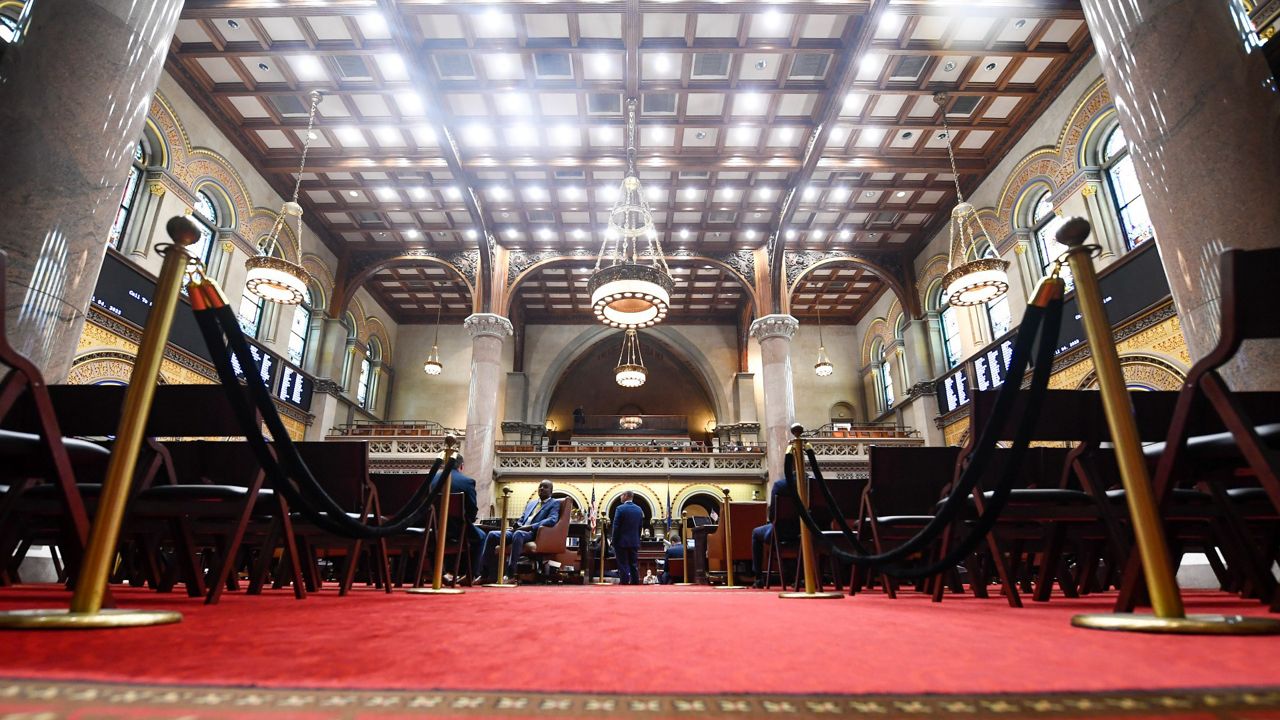The long-awaited answer to the question of "will 2025 be the NY HEAT Act’s year?" came to a rather underwhelming conclusion in the state Assembly chamber Monday.
The state Assembly has long been the stumbling block for the bill, which has passed multiple times in the state Senate and seeks to align the state’s utility guidelines with its move away from fossil fuels. So much so that last week a compromise bill was introduced that revamped the original legislation specifically to address concerns coming out of the lower chamber.
That bill was named "The Customer Savings and Reliability Act" and sought to address those concerns by stressing flexibility for consumers, utility companies and local governments.
Just in case the Assembly still couldn’t get onboard with the compromise, state Sen. Liz Krueger led the Senate in passing both the Customer Savings and Reliability Act as well as a second bill which would simply repeal the 100-foot rule, a key component of both the HEAT Act and its successor, leaving the Assembly to make the call.
Ultimately on Monday, the Assembly decided to move only on the straight repeal of the 100-foot rule, which requires that utility companies supply gas to any customer who wants it with the cost falling on ratepayers if they are within 100 feet of an existing line.
The repeal is being billed as a step forward by environmental advocates, and a could-be-worse-but-still-bad scenario by opponents of the full HEAT Act.
Assembly sponsor Jo Anne Simon told Spectrum News 1 as much just after the bill passed.
“Is it everything we wanted? Of course not. But it is a first step in the right direction,” she said. “It makes a difference for people and starts the ball rolling toward progress on our commitments under the CLCPA.”
Simon argued that the repeal will ultimately reduce the expansion of natural gas infrastructure while also representing a victory for ratepayers, who she argued foot the bill for gas hookups that are billed to the customer as being free.
“In fact it’s not free — there is no free lunch,” she said. “In reality all of the ratepayers pay for it — not the utility. People don’t realize that’s what’s happening.”
Krueger, who left Albany last week at the conclusion of the Senate’s session, was left to wait and see what the Assembly would decide to do with their menu of options. In a statement, she agreed that the repeal is a step in the right direction, but teased a continued push that Simon agreed would commence next legislative session.
"Repealing this outdated ratepayer subsidy that costs gas customers over $200 million each year is a critical step in delivering energy affordability for New Yorkers,” she said. “But we still have so much work to do to ensure that we don't continue to waste billions of dollars on expensive and unnecessary gas infrastructure. In the coming sessions we must continue to work to save ratepayers money while providing modern heating, cooling, and cooking options that work better and don't endanger the health and safety of New York families."
Republican state Assemblymember Phil Palmesano, a stanch opponent of the HEAT Act, said afterward that despite his stiff opposition to the straight repeal, he’s thankful that the full Customer Savings and Reliability Act did not pass.
“HEAT Act 2.0 would have been much worse,” he said. “But this isn’t much better.”
Specifically, he took issue with Simon’s argument that the repeal will save ratepayers money, arguing instead that it will cost them by decreasing the total pot of revenue.
“When you have more natural gas customers on the system, their revenue is added in to help pay for the fixed operation and capital costs that must be paid by the existing customers,” he said.
The repeal now moves to Gov. Kathy Hochul's desk for final approval.


